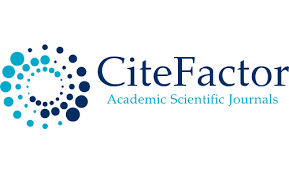Theory of Humor and its Classification in Linguistics
Keywords:
Humor, concept of humor, laughter, combination of comicAbstract
Humor is a unique feature of the human mind that allows us to perform a number of functions in society more successfully. Humor allows people to share thoughts and feelings, and to express criticism or displeasure in a socially acceptable way. Thus, for example, humor is used to soften criticism, making it more insulting than direct accusations. Humor facilitates social interaction when sharing unpleasant information. Perception of shared humor allows us to establish and maintain social relationships, which improves mutual understanding between people. With the help of humor, people share their feelings, it should be noted that it is not only positive, but also negative, which is generally not accepted in society. Humor is a special social tool that relieves psychological stress and improves human relationships in general. Obviously, humor helps to socialize.
References
Brownell H. Neuropsychological insights into humor / H. Brownell, H. Gardner // J. Durant
& J. Miller (Eds.), Laughing matters: A serious look at humor. – London: Longman, 1988. –
pp. 17-34.
Haig R.A. Therapeutic uses of humor // American Journal of Psychotherapy, 40(4), 1986. –
pp. 543-552.
Zaliznyak A.A. Constants and variables of the Russian language picture of the world A.A.
Zaliznyak, I.B. Levontina, A.D. Shmelev. - M.: Languages of Slavic cultures, 2012. - 696 p.
Daws S. Why not say it directly? The social functions of irony / S. Daws, J.Kaplan, E. Winner
// Discourse Processes, 19(3), 1995. – pp. 347-367.
Tojiboyeva M. Mamlakat LINGUISTIC ANALYSIS OF PUN AND WORDPLAY IN THE
ENGLISH LANGUAGE: LINGUISTIC ANALYSIS OF PUN AND WORDPLAY IN THE
ENGLISH LANGUAGE //Журнал иностранных языков и лингвистики. – 2022. – Т. 4. –
№. 4.
Qizi T. M. B., Nomrboyevna E. M. Grammatical category is a unity of grammatical form and
grammatical meaning //Asian Journal of Multidimensional Research. – 2021. – Т. 10. – №.
– С. 307-310
Downloads
Published
Issue
Section
License

This work is licensed under a Creative Commons Attribution-NonCommercial 4.0 International License.
User Rights
Under the Creative Commons Attribution-NonCommercial 4.0 International (CC-BY-NC), the author (s) and users are free to share (copy, distribute and transmit the contribution).
Rights of Authors
Authors retain the following rights:
1. Copyright and other proprietary rights relating to the article, such as patent rights,
2. the right to use the substance of the article in future works, including lectures and books,
3. the right to reproduce the article for own purposes, provided the copies are not offered for sale,
4. the right to self-archive the article.












